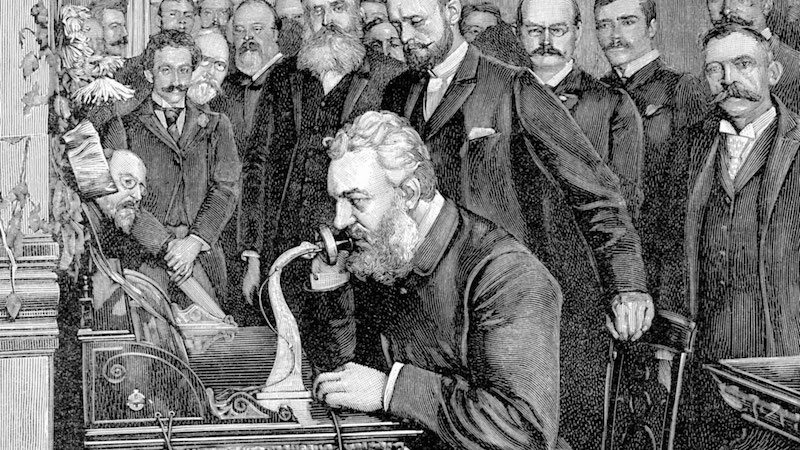Telephone
Episode #6 of the course “Inventions that changed the world and their stories”
On Valentine’s Day in 1876, Alexander Graham Bell was about to tell the world about an invention that would assist personal communication. However, Bell was not alone. Soon after he submitted papers for the telephone to the US Patent Office, Elisha Gray warned that he was going to submit too. Thankfully, Bell was first. Both inventors’ ideas were similar, but Bell’s speech and hearing knowledge gave him an advantage; Bell’s father and grandfather were both speech and hearing professionals.
In 1870, Bell went to Boston and opened a school for teachers of the deaf. While experimenting with a harmonic telegraph, Bell noticed that a strip of iron near an electromagnet replicated vibrations from a similar piece and magnet connected by wires. He used the idea to transmit speech.
With mechanic Thomas Watson, he endeavored to make electric currents imitate sound waves. His arrangement wasn’t sensitive enough, so Bell tried dipping a needle into acid. The needle was attached to a sheet framed parchment, with a horn to concentrate the sound. A sound moved the paper, varying the resistance of the needle’s contact with the acid, which then changed the current.
The telephone did not work right away. Then, on Friday, March 10, 1876, Bell was working with the transmitter while Watson was tinkering with the receiver across the house. Bell said, “Mr. Watson, come here, I want you.” When he heard his words, Watson went to Bell. These were the first words heard via telephone. Then, in 1877, he showed how the phone worked at his company.
Bell grew rich quickly and used some money to help deaf people and to build a home in Canada. He invented more and became president of the National Geographic Society. But Bell will always be remembered best for helping people communicate from afar.
Share with friends

